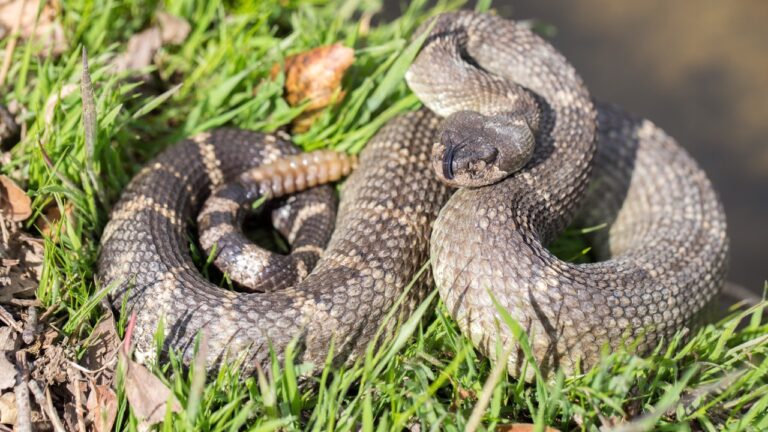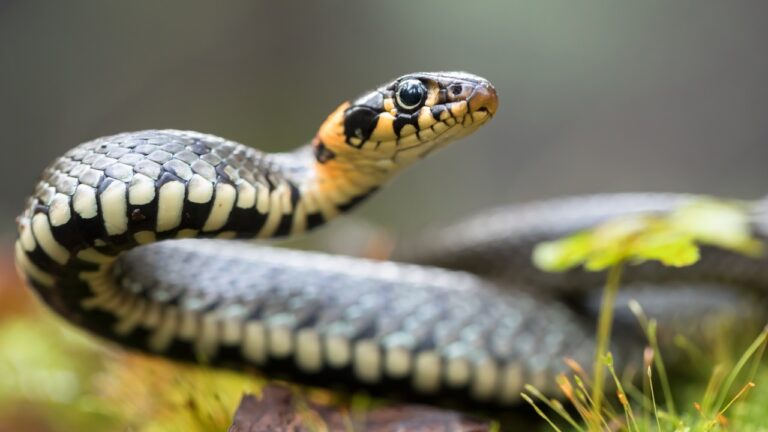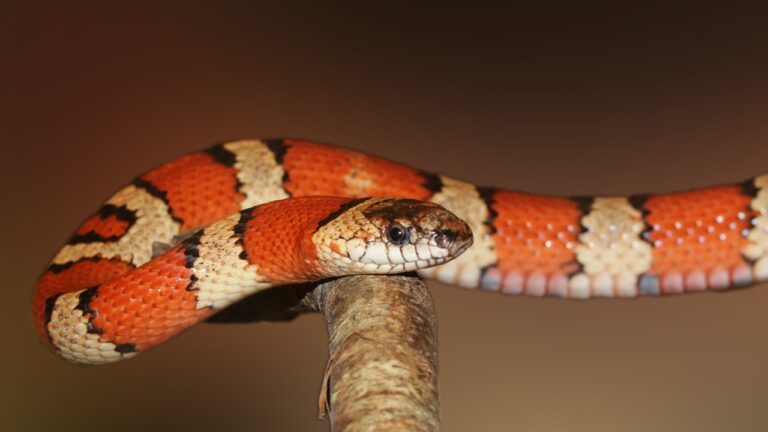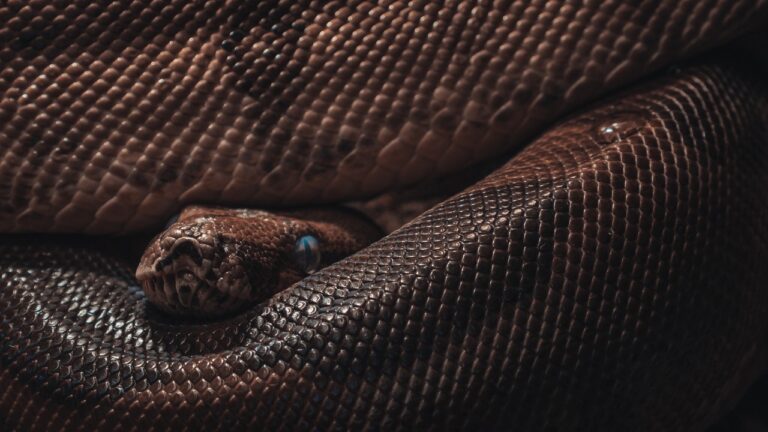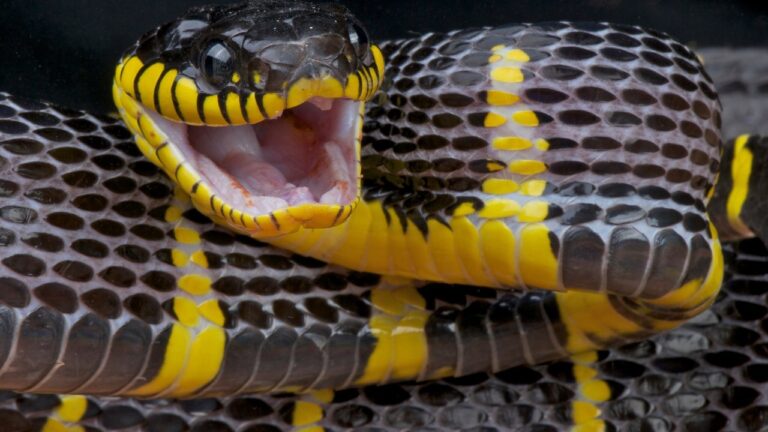Snake Prey: Essential Nutrition for Healthy Serpents
Importance of nutrition for snakes
When it comes to the well-being of our slithering friends, nutrition plays a pivotal role. A snake’s diet is not just about satisfying their hunger; it directly impacts their overall health and vitality. Just like any other living creature, snakes require a balanced and nutrient-rich diet to thrive in their natural habitat or captivity.
Providing the proper snake nutrition is essential for maintaining their optimal health and ensuring their longevity. It is crucial to understand the specific dietary needs of these fascinating creatures to prevent nutritional deficiencies or related health issues. By offering a diverse range of prey, carefully monitoring their feeding schedule, and considering their nutritional requirements, you can help your beloved serpent lead a healthy and fulfilling life.
In this comprehensive guide, we will delve into the intricate world of snake nutrition, exploring the various types of prey that fulfill their dietary needs, understanding their nutritional requirements, and discussing the best practices for feeding and preparing prey. By the end of this article, you will have a comprehensive understanding of snake nutrition, empowering you to make informed decisions when it comes to your serpent’s diet.
So, let’s slither into the fascinating realm of snake nutrition and learn how to provide the best sustenance for these mesmerizing reptiles. Get ready to explore the world of snake food, snake feeding, and the intricacies of their unique snake digestive system. After all, a well-fed snake is a happy snake!
Types of Prey for Snakes
When it comes to the diets of these slithering creatures, snakes are true carnivores. They rely solely on a diet of live prey to meet their nutritional needs. While the specific types of prey may vary depending on the species of snake, there are a few common options that are universally enjoyed by these remarkable reptiles.
Mice and Rats
Perhaps the most well-known prey for snakes are mice and rats. These small rodents provide a convenient and readily available source of nutrition for snakes of all sizes. From the tiny hatchlings to the mighty constrictors, mice and rats offer a balanced combination of protein, fats, and minerals that are essential for the health and vitality of our scaly friends.
Birds
Birds also make up a significant portion of a snake’s diet. Whether it’s small birds like sparrows or larger ones like quails, snakes have a remarkable ability to capture and consume their feathered prey. The high protein content found in birds is particularly beneficial for the growth and maintenance of muscle tissue in these agile hunters.
Amphibians and Reptiles
Snakes, being part of the reptile family themselves, have no qualms about feasting on their fellow cold-blooded creatures. Amphibians and reptiles, such as frogs, lizards, and even other snakes, are a common choice for snake cuisine. These slithery delicacies provide a rich source of nutrients, including protein, vitamins, and minerals that contribute to the overall well-being of our serpentine companions.
Insects
While not the mainstay of a snake’s diet, insects do play a role in providing variety and enrichment. Smaller snake species, such as garter snakes, will readily consume insects like crickets and mealworms. In addition to being a source of protein, insects also offer a different texture and taste, stimulating the snake’s senses and adding diversity to their diet.
As you can see, snakes have a diverse palate when it comes to their prey. Each type of prey brings its own nutritional benefits, helping to ensure that these fascinating creatures receive a well-rounded diet. Understanding the different types of prey that snakes consume is just the first step in unraveling the intricacies of their nutrition. To delve deeper into the world of snake nutrition, be sure to check out our snake nutrition guide, where we explore the specific nutritional requirements and feeding habits of these remarkable reptiles.
Nutritional Requirements for Snakes
When it comes to the nutritional needs of our slithery friends, snakes have some specific requirements that must be met for them to thrive. Providing a well-balanced diet is crucial for their overall health and longevity. In this section, we will explore the essential nutritional components that snakes require in order to maintain optimal well-being.
Protein
Protein is a vital macronutrient for snakes, playing a critical role in various physiological processes. As carnivores, snakes rely on protein to build and repair tissues, support muscle development, and maintain overall body function. The primary source of protein for snakes is their prey, which typically consists of small mammals, birds, amphibians, reptiles, and even insects.
To ensure that your snake receives an adequate amount of protein, it is important to offer a varied diet that includes different types of prey. This will help mimic their natural feeding habits and provide them with a diverse range of essential amino acids. Amino acids are the building blocks of protein and are necessary for the growth and maintenance of body tissues. Remember, a healthy snake is a well-fed snake!
Fats
Contrary to popular belief, fats are an essential component of a snake’s diet. They serve as a concentrated source of energy and play a crucial role in maintaining healthy skin, scales, and internal organs. Additionally, fats are necessary for the absorption of fat-soluble vitamins, such as vitamins A, D, E, and K.
When it comes to providing fats for your snake, it is important to strike a balance. Too much fat can lead to obesity and health issues, while too little fat can result in malnutrition. Offering prey with an appropriate fat content, such as mice and rats, is a great way to ensure that your snake receives the necessary amount of fats for optimal health.
Vitamins and Minerals
In addition to protein and fats, snakes require a range of vitamins and minerals to support their overall well-being. These micronutrients play a crucial role in various physiological processes, including immune function, bone health, and proper cellular functioning.
Vitamins, such as vitamin D and vitamin C, are essential for maintaining strong bones and supporting the immune system. Minerals, including calcium and phosphorus, are necessary for skeletal development and muscle function. It is important to note that snakes obtain these vitamins and minerals from their prey, making it crucial to offer a varied diet to ensure they receive an adequate supply.
To provide a well-rounded nutritional profile for your snake, consider offering a supplement designed specifically for reptiles. These supplements are formulated to provide the necessary vitamins and minerals that may be lacking in their diet.
In the next section, we will delve into the importance of establishing a proper feeding schedule for your snake, including the frequency of feedings and the appropriate portion sizes. Stay tuned!
Next up: Feeding Schedule for Snakes
Feeding Schedule for Snakes
When it comes to the feeding schedule for snakes, it is essential to strike the right balance between providing enough nourishment and avoiding overfeeding. Snakes, like any other living creature, require a well-thought-out feeding routine to maintain their health and vitality.
Frequency of Feedings
The frequency of feedings for snakes depends on several factors, including their age, species, and size. As a general guideline, most snakes will require feeding every 5 to 14 days. However, it is crucial to note that individual snake species may have specific dietary needs, so it’s always best to consult reputable sources or a veterinarian specializing in reptiles to determine the ideal feeding frequency for your particular snake.
Proper Portion Sizes
Determining the proper portion size for your snake’s meals is crucial to ensure they receive the necessary nutrients without overindulging. The size of the prey you offer should be relative to the snake’s girth, providing it with a meal that is approximately 10-15% of its body weight. Offering prey that is too large can lead to digestive issues, while prey that is too small may not meet the snake’s nutritional requirements.
To simplify the process of determining the appropriate portion size, you can refer to a snake feeding guide or consult with experienced reptile owners. They can provide valuable insights based on their own experiences and the specific needs of different snake species.
Handling Live vs. Frozen Prey
When it comes to feeding snakes, there is an ongoing debate about whether to offer live or frozen prey. While both options have their pros and cons, it ultimately boils down to the individual circumstances and preferences of the snake owner.
Live Prey: Some snake owners choose to feed their serpents live prey as it mimics their natural hunting instincts. Watching a snake actively hunt and capture its prey can be an exciting and enriching experience. However, it is essential to exercise caution when offering live prey to ensure the snake’s safety. Live prey can potentially fight back and injure the snake, leading to unnecessary stress or even serious harm.
Frozen Prey: Alternatively, frozen prey is a popular choice among many snake owners. It offers several advantages, including convenience and safety. Frozen prey, such as mice or rats, can be easily purchased from reputable suppliers or prepared at home. Freezing the prey ensures that any potential parasites or diseases are eliminated, reducing the risk of health issues for the snake. Before offering frozen prey, it is crucial to thaw it properly to mimic the snake’s natural feeding conditions.
Ultimately, the decision to opt for live or frozen prey depends on the individual snake’s preferences and the owner’s comfort level. It’s important to consider the snake’s safety, nutritional needs, and the convenience of the feeding method.
By maintaining a well-balanced feeding schedule, providing proper portion sizes, and considering the best prey options for your snake, you can ensure that your scaly companion receives the nutrition it requires to thrive. Remember, a healthy diet is the cornerstone of a snake’s overall well-being.
For more information on snake nutrition and feeding, you can visit our website’s comprehensive guides on snake diet, snake food, and snake feeding.
Preparing Prey for Snakes
Snakes, renowned for their unique feeding habits, require careful consideration when it comes to preparing their meals. Whether opting for frozen prey or live prey, it is essential to ensure that the food is both safe and nutritious for these slithering creatures.
Frozen Prey
For snake owners who prefer the convenience and safety of frozen prey, there are a few key steps to follow. Firstly, it is crucial to thaw the frozen prey thoroughly before feeding it to your serpent companion. This can be achieved by placing the prey item in a sealed bag and allowing it to defrost naturally in the refrigerator. Never use a microwave or hot water to speed up the thawing process, as this can lead to uneven heating and potential bacterial growth.
Once the prey is fully defrosted, it is important to warm it up to mimic its natural body temperature. This can be accomplished by placing the prey in a plastic bag and immersing it in warm water for a few minutes. This step ensures that the snake perceives the prey as being alive, triggering its hunting instincts.
When offering the thawed and warmed prey to your snake, it is advisable to use feeding tongs to avoid any accidental nips or bites. Gently dangle the prey in front of your snake, allowing it to strike and constrict its meal naturally. This feeding method not only stimulates the snake’s hunting behavior, but it also minimizes the risk of injury to both the snake and the owner.
Live Prey
While some snake owners prefer the convenience of frozen prey, others opt for a more natural approach by feeding their serpents live prey. However, it is important to note that feeding live prey to snakes carries a higher risk. Live prey can potentially injure the snake during the feeding process, and there is also the possibility of the snake sustaining injuries from the prey’s defensive mechanisms.
If you choose to offer live prey to your snake, it is crucial to monitor the feeding process closely. Never leave the snake unattended while it is consuming its prey, as this can lead to unforeseen accidents. Additionally, it is essential to ensure that the prey item is of an appropriate size for the snake. Feeding a snake prey that is too large can result in digestive issues or even regurgitation.
To minimize the risks associated with live prey, some snake owners opt for pre-killed prey instead. This involves dispatching the prey humanely before offering it to the snake. While this option still provides the snake with the opportunity to exhibit its natural hunting behavior, it eliminates the potential dangers associated with live prey.
Remember, regardless of whether you choose frozen or live prey, it is crucial to provide your snake with a balanced diet that meets its nutritional requirements. This includes incorporating a variety of prey items to ensure that the snake receives all the essential nutrients it needs to thrive. For more information on snake nutrition and feeding, check out our comprehensive snake feeding guide.
By taking the time to properly prepare the prey and closely monitoring the feeding process, you can ensure that your snake receives the nourishment it needs while minimizing potential risks. Happy feeding!
Common Issues with Snake Nutrition
Ensuring proper nutrition for your serpent companions is crucial for their overall health and well-being. However, there are a few common issues that snake owners should be aware of to ensure their beloved reptiles thrive. Let’s take a closer look at some of the most prevalent issues related to snake nutrition: obesity, malnutrition, and vitamin and mineral deficiencies.
Obesity
Just like humans, snakes can also struggle with weight issues. Obesity in snakes is often caused by overfeeding or feeding prey items that are too large or high in fat content. When a snake consumes more calories than it burns, the excess energy is stored as fat, leading to weight gain.
Obesity can have serious consequences for snakes, including reduced mobility, organ stress, and an increased risk of developing other health conditions. To prevent obesity in snakes, it is important to establish a balanced feeding schedule and provide prey items that are appropriate in size and nutritional composition. Feeding your snake a diet that closely resembles its natural prey will help maintain a healthy weight and prevent unnecessary fat deposition.
Malnutrition
On the other end of the spectrum, malnutrition is a significant concern for snakes as well. Malnutrition occurs when a snake does not receive adequate essential nutrients, such as proteins, fats, vitamins, and minerals, to support its physiological functions. This can happen due to feeding a monotonous diet or inadequate prey items.
A snake suffering from malnutrition may display a range of symptoms, including weight loss, muscle weakness, dull skin, and a weakened immune system. In severe cases, malnutrition can lead to organ failure and even death. To prevent malnutrition, it is crucial to provide a varied diet that meets the specific nutritional requirements of your snake. Snake owners should consult a reputable source, like a snake nutrition guide, to ensure they are meeting their pet’s dietary needs.
Vitamin and Mineral Deficiencies
Snakes, like all animals, require a balanced intake of vitamins and minerals to maintain optimal health. Vitamin and mineral deficiencies can occur when a snake’s diet lacks the necessary variety or when the prey items themselves are deficient in these essential nutrients.
A deficiency in vitamins and minerals can result in various health issues, including weakened immune systems, poor growth, and reproductive problems. Additionally, certain vitamins and minerals play crucial roles in metabolic processes and the functioning of the snake digestive system. Providing a well-rounded diet that includes a variety of prey items and potentially supplementing with appropriate snake vitamins and minerals can help prevent deficiencies and promote overall health.
In conclusion, understanding and addressing common issues with snake nutrition is essential for the well-being of your slithering companions. By avoiding obesity through a balanced feeding schedule, preventing malnutrition through a varied diet, and ensuring an adequate intake of vitamins and minerals, you can help your snakes lead healthy and vibrant lives.
For more information on snake nutrition and feeding practices, feel free to check out our comprehensive resources on snake diet, snake food, and snake feeding.
Conclusion
In conclusion, a well-balanced and nutritious diet is crucial for maintaining the health and vitality of snakes. Proper nutrition plays a vital role in ensuring that these magnificent creatures thrive in captivity. By understanding the importance of nutrition and providing a varied diet, snake owners can promote optimal growth and prevent the onset of various health issues.
When it comes to feeding snakes, there are several types of prey that can fulfill their dietary needs. Whether it’s mice and rats, birds, amphibians and reptiles, or insects, each prey item offers a unique nutritional profile. By offering a variety of prey, snake owners can mimic the diverse diet that snakes would consume in the wild.
To meet the nutritional requirements of snakes, it’s crucial to consider the three major components of their diet: protein, fats, and vitamins and minerals. Protein is essential for muscle development and growth, while fats provide a concentrated source of energy. Vitamins and minerals play a vital role in maintaining overall health and supporting various physiological functions.
Establishing a proper feeding schedule is also essential for snake owners. The frequency of feedings depends on the age, species, and size of the snake. Providing the proper portion sizes is crucial to avoid overfeeding or underfeeding. Additionally, the debate between handling live vs. frozen prey is an important consideration, and both options have their advantages and disadvantages.
In preparing prey for snakes, it’s important to ensure that frozen prey is thawed properly and free from any contaminants. Live prey, on the other hand, requires careful consideration to minimize the risk of injury to the snake. Snake owners should always prioritize the safety and well-being of their serpents when choosing between the two options.
While proper nutrition is vital, it’s important to be aware of common issues that may arise. Obesity, malnutrition, and vitamin and mineral deficiencies are some of the challenges that snake owners may face. Monitoring the snake’s body condition and making adjustments to the diet when necessary can help prevent these issues from occurring.
In summary, providing a well-rounded and nutritious diet is essential for the overall health and well-being of snakes. By understanding their specific nutritional needs, establishing a feeding schedule, and being aware of common issues, snake owners can ensure that their serpents thrive in captivity. For more detailed information on snake nutrition, check out our comprehensive snake nutrition guide.
Remember, a healthy snake is a happy snake!



